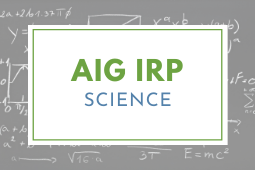Fantastic Photosynthesis (AIG IRP)

Overview
This task could be used as part of photosynthesis instruction or as an assignment before photosynthesis is taught. This lesson was developed by NCDPI as part of the Academically and/or Intellectually Gifted Instructional Resources Project. This lesson plan has been vetted at the state level for standards alignment, AIG focus, and content accuracy.
Lesson Overview
Brief Description of Lesson/Task/Activity: This task could be used as part of photosynthesis instruction or as an assignment before photosynthesis is taught.
Time Frame: 3-5 days
Type of Differentiation for AIGs:
- Enrichment
- Extension
Adaptations for AIGs:
- Content
- Process
- Product
Explanation of How Resource is Appropriate for AIGs: This task addresses content beyond the regular curriculum, encourages the transfer of knowledge from website to students and then to other students. It encourages students to develop their own understanding of the processes involved in photosynthesis (active learning) and requires students to answer questions at a higher level of Blooms and create their own vehicle to share their knowledge.
Needed Resources/Materials:
- Computer with internet
- Poster board
- Props for skit
Sources: Please note that many of these websites require Adobe Flash Player, which will no longer be supported after December 2020.
- http://highered.mcgraw-hill.com/olcweb/cgi/pluginpop.cgi?it=swf::535::535::/sites/dl/free/0072437316/120072/bio13.swf::Photosynthetic%20Electron%20Transport%20and%20ATP%20Synthesis
- http://www.johnkyrk.com/photosynthesis.html
- http://dendro.cnre.vt.edu/forestbiology/photosynthesis.swf
- http://vcell.ndsu.edu/animations/photosynthesis/movie.htm
- http://www.stolaf.edu/people/giannini/flashanimat/metabolism/photosynthesis.swf
- http://www.science.smith.edu/departments/Biology/Bio231/calvin.html
Stage 1: Engage
Pose the following question and allow students to share and discuss their responses: How are plants like machines?
Share the following information: They are able to take light energy, water and CO2 and produce the sugar (glucose) that almost all of life relies on for survival. Without plants, we would not have food or oxygen! The process of photosynthesis is a well synchronized series of steps. Plant mass due to glucose varies from 60% to only 4%. Those with the higher percent mass are very efficient. The process of photosynthesis is amazing when you consider how many different processes are involved.
Stage 2: Elaborate
Students will research all of the processes involved in photosynthesis, from Photosystems to the Calvin Cycle, to create a chart and a poster or a skit to develop and demonstrate their understanding of photosynthesis. Students will develop a list of inputs and outputs for both the Light reaction (photosystems) and the Dark reaction (Calvin cycle). Students will create a chart/table to illustrate what is needed for each step and what is produced by each step. Students will also design a poster or write a skit to show what is needed for each step and what is produced at each step. The posters or skit will be used to support the teaching of photosynthesis to other students.
Students will read and watch animations from the above websites and others they find to respond to the following prompts (or prompts similar to the following) and then to create a vehicle to transfer their knowledge of the processes of photosynthesis to other students.
- Differentiate between the structure and functions thylakoids and stroma.
- Differentiate between oxidation and reduction.
- Distinguish the roles of photosystem II and photosystem II during the light reaction.
- Evaluate the role of the electron transport chain in photosynthesis.
- Compare NADP+ and NADPH.
- Describe the role of ATP synthase in photosynthesis.
- Compare the purpose of the light reaction and the purpose of the dark reaction.
- Explain the roles of ATP and NADPH.
- Create a chart showing the inputs and outputs and where each comes from and/or goes for both the light reaction and the dark reactions- include at least the following: ADP, Pi, ATP, O2,CO2, G3P, H2O, e-,C6H12O6
Once students have an understanding of the processes of photosynthesis, they are to create a poster showing the interconnectedness of the
2 processes or a skit to show what moves into and out of the light reaction and what moves into and out of the dark and how the 2 processes are interconnected.
Stage 3: Evaluate
Check for correct answers to the prompts provided before allowing students to move to part 2 of the task. Give points based on the correctness and completeness of the answers.
For part 2 of the task, create a rubric based on the criteria required.